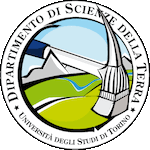Dipartimento di Scienze della Terra, via Valperga Caluso 35 - Torino
Dr. Frédéric GIRAULT
Physics of Natural Sites, Institut de Physique du Globe de Paris
Fluid–earthquake interplay, as evidenced by aftershock distributions or earthquake-induced effects on nearsurface aquifers, has suggested that earthquakes dynamically affect permeability of the Earth's crust. The connection between the mid-crust and the surface was further supported by instances of carbon dioxide (CO2) emissions associated with seismic activity, so far only observed in magmatic context.
In the Main Central Thrust zone of the Nepal Himalayas, following evidence of degassing from chemical and isotopic analysis of hot springs and rivers, large CO2 emissions were discovered near hot springs, with CO2 fluxes at places similar to diffusive fluxes from active volcanoes. These non-volcanic CO2 emissions are characterized by radiogenic helium, high radon content, and carbon isotopic compositions suggesting metamorphic CO2 production at more than 5 km depth.
Recently, spectacular non-volcanic CO2 outbursts and hydrothermal unrest have been reported at the front of the Nepal Himalayas following the deadly 25 April 2015 Mw7.8 Gorkha earthquake. The data show unambiguously the appearance, after the earthquake, sometimes with a delay of several months, of CO2 emissions at several sites separated by more than 10 km. These first earthquake-induced gaseous changes in the absence of magmatic activity were associated with persistent changes in hydrothermal discharges, including a complete cessation.
These observations attest the presence of a large, relatively shallow, reservoir of CO2 in the Himalayan crust, suggesting that metamorphic CO2 produced at depth is huge, as independently shown by petrologicalestimates, and unlikely sequestered. Interesting pre-seismic effects, possibly observed at selected hot springs, open promising perspectives for the coming giant Himalayan earthquake. This study reveals that Himalayan hydrothermal systems are highly sensitive to co-, post- and possibly pre- seismic deformation, leading to non-stationary release of metamorphic CO2 from active orogens.
Flyer
